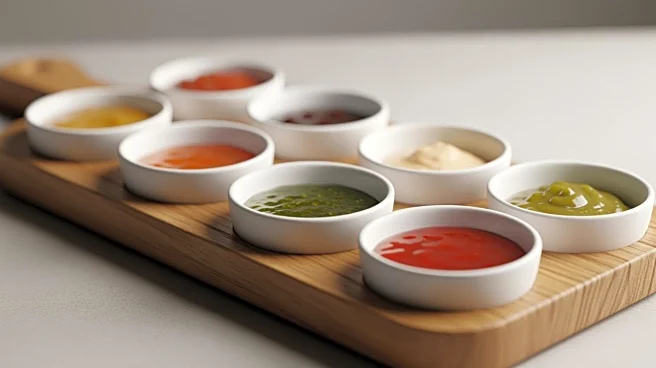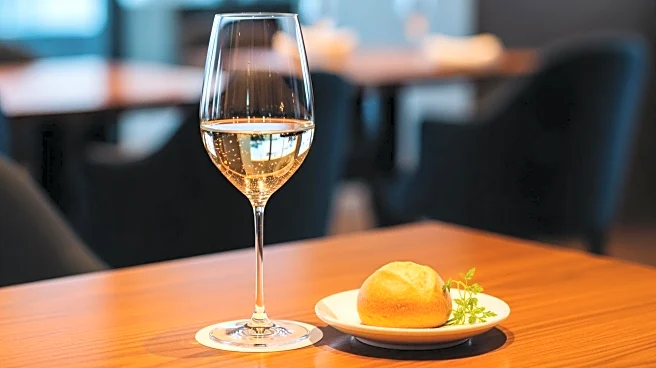What's Happening?
Kimpton Hotels & Resorts has released its annual Culinary + Cocktail Trend Forecast for 2026, highlighting emerging trends in the food and beverage industry. The forecast, crafted by Kimpton's global chef and bartending community, emphasizes unique dining
styles, bold ingredients, and expert techniques that are expected to shape the hospitality scene. Key trends include the resurgence of charcoal as a cooking medium, globally inspired pancake variations, and the rise of heritage and third-culture cuisine. Additionally, the forecast predicts a shift towards natural sweetness in cocktails, with botanicals replacing added sugars, and the introduction of banana milk as a popular alternative. These trends reflect a growing consumer desire for authentic, multisensory dining experiences that engage all senses.
Why It's Important?
The trends identified by Kimpton are significant as they reflect broader shifts in consumer preferences within the hospitality industry. As guests increasingly seek deeper connections through food and drink, the emphasis on authentic flavors and multisensory experiences could drive innovation in restaurant and bar offerings. This shift may benefit establishments that can adapt to these trends, potentially increasing customer engagement and satisfaction. The focus on natural ingredients and global influences also highlights a move towards sustainability and cultural inclusivity, which could impact industry standards and practices. Businesses that embrace these trends may gain a competitive edge in attracting a diverse clientele seeking unique and meaningful dining experiences.
What's Next?
Kimpton's forecast suggests that guests at its hotels, restaurants, and bars worldwide will have the opportunity to experience these new flavors throughout the year. As the trends unfold, hospitality businesses may need to adapt their menus and offerings to align with consumer expectations. This could involve sourcing unique ingredients, experimenting with new cooking techniques, and creating innovative beverage programs. The industry may also see increased collaboration between chefs and mixologists to craft experiences that surprise and delight patrons. As these trends gain traction, they could influence broader industry practices, encouraging other hospitality brands to innovate and redefine their culinary and cocktail offerings.
Beyond the Headlines
The emphasis on heritage and third-culture cuisine highlights a cultural dimension that could foster greater appreciation for diverse culinary traditions. This trend may encourage chefs to explore their own cultural backgrounds, leading to more personalized and authentic dishes. Additionally, the focus on natural sweetness and botanical ingredients in cocktails reflects a growing consumer interest in health-conscious choices, potentially influencing broader dietary habits. As these trends evolve, they could contribute to a more inclusive and sustainable hospitality industry, where cultural diversity and environmental responsibility are prioritized.














